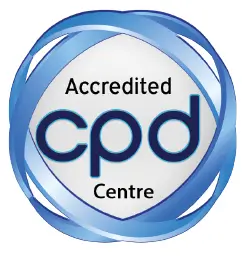Is This for You?
The course is designed for those wishing to pursue a career in IT/Network support, with networks running the Windows 7 Server environment.
Award and Associated Qualifications

Awarded 20 CPD points upon successful completion




The course is designed for those wishing to pursue a career in IT/Network support, with networks running the Windows 7 Server environment.




Microsoft operating systems are the most widely used programmes in business today. So if you’d like to work within a company’s IT department as a support function looking after servers which have a Microsoft Windows 7 operating system, this is the perfect course for you.
The course covers a range of topics including starting Windows 7, gaining an understanding of its parameters and how you can personalise the system so that if fits in with the way a business works.
There’s a whole host of great features to get excited about with Windows 7. The course aims to break down the information to teach you how to simplify everyday tasks through the use of jump lists, aero peek, pinned items, homegroups and the how the innovative networking system allows users to share video, music, and personal data in the quickest and most secure manner.
Upon the completion of our Learning Windows 7 course, you’ll feel confident that you have the understanding you need to work within an IT support role and you will receive a Pitman Training Course Completion certificate.
Section A: Introduction to Windows 7 – Editions, Home Premium, Gadgets, Professional, Ultimate, System Requirements, Installing.
Section B: Exploring Windows 7 – Startup, Logging On, The Desktop, The Start Menu, Search Field, Shut Down, The Taskbar, Notification Area, Help and Support.
Section C: Navigating Windows and Folders – Organisation and Navigation, Hot Keys, Hiding/Displaying Windows, Jump List, Files and Folders, File Structure, Explorer Features, Accessing Network Drives.
Section D: Managing Files and Folders – Viewing Files and Folders, Folder Content, Folder Options, File Properties, Properties Dialog Box, Folder Properties, Renaming, Creating a Folder, Copying Files, Compressing, Deleting.
Section E: Personalising Windows – Desktop Themes, Desktop Background, Sounds, Screen Saver, Screen Resolution, Advanced Settings.
Section A: System Settings – Start Menu Settings, Taskbar Customisation, Taskbar Toolbars, Taskbar Properties, Notification Area, Date and Time Settings, Computer Name, Power Options.
Section B: The Control Panel – Control Panel Categories, Accessing the Control Panel, User Account Control, System Information.
Section C: Network Connections – Connecting to a Network, Adding a Network Connection, Set a Network Location, Creating a Homegroup, Homegroup Settings, Leaving a Homegroup, Sharing Files and Folders, Sharing Settings, Adaptor/Connector Settings.
Section D: Connecting to the Web – Internet Connection, Internet Explorer 8, Addresses, Web Sites, Internet Explorer Toolbars, Tabbed Browsing, Tab Settings, Tab Lists, Browsing History.
Section E: Personalising Internet Explorer 8 – Your Home Page, Font Settings, Color Settings, Changing Your Home Page, Removing a Homepage, Setting Default Programs.
Section F: Updating the System – Updates, Update Settings, Installing an Update.
Section G: Set Up Hardware Devices – Peripheral Devices, Ports, USB/FireWire, Installing Devices, Device Properties, Adding Network Printers, Printer Sharing, Sound Settings, Speech Recognition, Mouse Keyboard Properties, System Information.”
"*" indicates required fields
The Learning Windows 7 training course has been developed to give you a basic level of knowledge and understanding about the latest Microsoft operating system Windows 7.
Prior to starting the course a knowledge of basic computer networking and the Windows Server environment would be an advantage but not essential.
Wherever possible our training is tailored to your needs. The cost of our training programmes depend on the course(s) you choose and varies according to duration and breadth. Rest assured we have a number of payment options available to ensure the cost of training is affordable and can be worked alongside your other financial commitments. Common ways people fund their training include: –
Requesting funding from your employers needn’t be a daunting task. Many employers support and encourage their employees with their professional development and consider it a worthwhile investment to fund any training required.
What we can help with:
* Terms and Conditions apply. Speak to a Course Advisor for full information on the options available to you.
A great intro course this could lead you towards a fulfilling career in IT. With further training, and depending on what area you want to focus on, you could work towards becoming an IT Support Technician, Server Support Technician, Helpdesk Engineer or Network Engineer.

Request more details or call the team on 1800 532632.